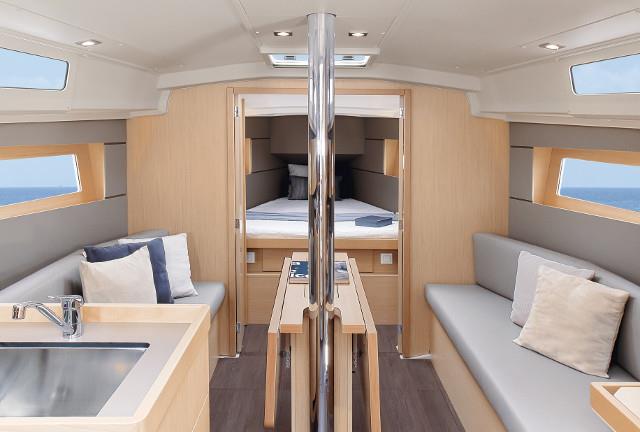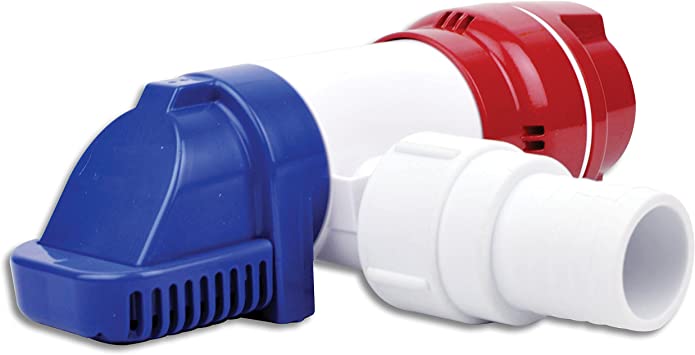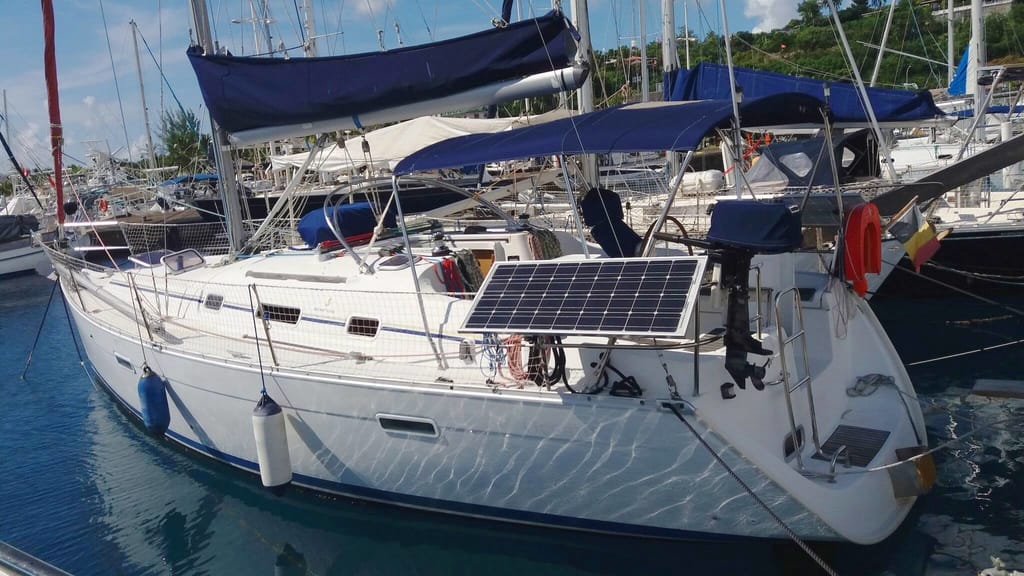Tips For Living On a Sailboat
Cruising on a small boat involves living in a confined space with the other crew members for the duration of the trip. Make it a great experience by learning to live and work as part of a team, and adapting to the limitations of the onboard facilities.
Here Are Some Tips With Help You Living on a Boat
Sharing Space
When four or more crew are living onboard, space on yachts can be limited, so the skipper must explain to the crew the importance of being tidy, stowing gear when not in use, and keeping the boat clean and dry. Nothing reduces morale faster than living in a damp, dirty boat with personal items scattered about the small space.
Keep the Cabin Clutter-Free
- Personal Gear: Stow all personal items in the lockers allocated to you and do not leave anything lying around on tables or seats as it may end up on the cabin floor when the boat heels.
- Keeping Tidy: Do not clutter working spaces such as the chart table or galley with your personal gear.
- Cleaning Schedule: Clean the galley, heads, and cabins regularly, depending on the size of the crew and boat, and weather conditions.
- Keeping Record: Note down where equipment and supplies are stored, so you can find things easily without searching the boat.

Working With the Crew
- Teamwork: Cooperation is important for all jobs on the boat, not just sailing tasks. Organize a rota for chores to ensure that everyone participates in all the sailing and domestic jobs.
- Consideration: Help crew members get good quality rest when off watch by respecting their personal space. Limit bright lights in cabins at night, and keep unnecessary noise to a minimum.
Berths and Storage
On a cruiser for offshore passages, there should be a sea berth for every off-watch crew member and enough storage space for personal gear. Most boats are designed to provide as much storage space as possible in a limited area. There is usually stowage space under each berth, inside the saloon table, under the cabin floor, and in cupboards at the hull sides.
How to Stow Gear
- Label and Hang: Hang life jackets and safety harnesses in a dedicated, easy to access locker that is ventilated and drains to the bilge to allow wet gear to dry.
- Dedicated Lockers: There should be a dedicated locker space for as much equipment as possible. Store crockery in lockers where it cannot be thrown or tipped out of its stowage when the boat heels.
- Personal Kit: Keep all your personal kit neatly stowed in the locker(s) assigned to you, and do not leave the kit loose in the main cabin (saloon).
Use Lee-Clothes
- Comfort Under Way: All sea berths should be fitted with lee- cloths or leeboards, which retain a sleeping person in the berth when the boat heels.
Forecabin Berth
- V-berth: Many yachts have a V-berth built into the forecabin.
- Best in Port: Berths in the forecabin are really only usable in harbor as the motion is usually too great in the bow to allow sleeping at sea.

Saloon Berth
- Extra Berths: In most boats, the saloon settees also double as berths.
- Pros and Cons: Berths in the saloon are usually near the middle of the boat where the motion is least, but they are in a busy part of the boat and can be noisy.
Aft Cabin Berth
- Less Motion: An aft cabin berth can provide a good sea berth as the motion is usually much less than in the bow.
- Double or Split: Double berths are often fitted in the aft cabin. They can be difficult to sleep in at sea unless they are split with a lee-cloth.
Cooking on Board
Appetites generally increase while sailing, so it is very important to provide sustaining food. It is essential that meals are prepared to suit the watch system and that the galley is kept clean and tidy. Cooking is usually on gas, so the skipper must brief the crew on safety precautions.
Feeding the Crew
- Plan Ahead: Have a menu plan for your trip and provision the boat accordingly.
- Cook in Advance: If the boat has a fridge or freezer, prepare meals ashore for a short cruise.
- Ready-meals: Have a stock of these in case of bad weather and keep a container of chocolate, biscuits, fruit, raisins, and other snacks for the on-watch crew.
How To Arrange Your Boats Galley
- Fridge: A top- opening fridge is fitted under the galley worktop.
- Sink: Single or twin sinks are usually located near the stove close to the companionway.
- Fiddles: High fiddles on counters hold pots, pans, and utensils in place and prevent spillages when the boat heels.
- Gimbals: These fittings permit the cooker to swing when the boat heels, allowing pans on top to remain horizontal.
- Pan Clamps: These hold pots and pans securely on the gimbaled stove.
- Crash Bar: Fitted in the front of the stove, a crash bar provides an important handhold for the cook.
Using Gas Safely
- Storage: Stow the gas bottle in a self-draining deck locker.
- When Not in Use: Turn off the supply at the bottle and at the cabin valve if fitted, when the gas is not being used.
- Gas Alarm: Fit and maintain a gas alarm and pump the bilges frequently to expel leaked gas.
- Ventilation: Open hatches if appropriate to let in fresh air when cooking.
Heads (aka. Bathrooms) and Plumbing
Most heads contain a marine toilet, a small washbasin, and lockers for personal items. Some also have a shower with hot and cold water. The skipper should make sure that all crew and visitors understand how to operate these facilities, especially the toilet. Mistakes here can make things very unpleasant. Put clear instructions for use by the toilet.
How To Use the Toilet and Shower
- Compact Arrangement: The toilet and shower are usually fitted into a small compartment with minimum storage space.
- Cleanliness: Always keep the heads clean, or the compartment will quickly start to smell.
- Shower: Some heads have a shower facility with hot and cold pressurized water.
- Water Use: If a pressure shower is fitted, make sure all the crew knows the limitation on the amount of water carried.
- Pressure System: It is best to turn the pressure system off at sea and use a fitted hand-pump to conserve water. There should always be a manual freshwater pump in both galley and heads.
Understanding The Pumps
- Bilge pump: A yacht should have at least one high-capacity manual bilge pump to pump out water that collects in the bottom of the hull.
- Usability: The pump must be fitted in a place where it is easy and comfortable to use for long periods, with the handle stowed close by.
- Sump Pumps: A shower tray is often emptied by an electric pump, which may be mounted in its own sump along with a float switch.
- Maintenance: Clean shower sump pumps regularly to prevent the build-up of hair, which can cause a blockage. Check the float switch for free movement. Tighten stainless-steel clips on the hoses to ensure water-tightness.
- Electric Bilge Pump: Clean the pump strainer and test the float switch and the in-use alarm regularly to prevent failure.
- Manual Bilge Pump: Always have a high-capacity manual bilge pump fitted to cope with any serious ingress of water, such as after a collision.

Electric Power Sources
Most cruising yachts rely heavily on their electrical system. 12-volt power is used to run navigation and communications equipment, lighting, entertainment systems, and a fridge. 240-volt power is also used on many boats for domestic needs. Consequently, there is a need to generate and store sufficient power, and to be frugal in its use.
Things You Need to Know About Batteries on Boats
- Storage Power is stored onboard in batteries, usually at 12 volts DC. This is used when the engine is not running to power all the yacht’s electrical systems.
- Domestic batteries Traction batteries, often wired in series, in a battery bank, are the most suitable type for domestic power needs on board.
- Engine start battery There should be a separate battery used solely to start the engine.
- Engine-charging An alternator on the engine provides power to the starter and domestic batteries whenever the engine is running.
- “Smart” regulator This regulator increases the charging efficiency and reduces the amount of time you have to run the engine to charge the batteries.
- AC battery charger Many cruisers have a battery charger that can be powered from an onshore AC power source.
Alternative Sources of Power
- Wind power A wind generator can deliver useful power to the batteries. The equipment should be mounted high enough so that the blades are well clear of head height to avoid injury.
- Solar panels Useful in sunny climates, rigid, semi-flexible, and flexible designs are available.
- Combined power Wind and solar power together can provide enough power to run all the necessary systems and minimize the need for engine-charging.
- Water-driven generators Efficient power generation can also be provided by a generator attached to the stern and driven by water flow.
Using AC Power
- Shore power Most marinas have shore power stations on the pontoon that deliver AC power.
- Safety If the boat has an AC system, it should be kept isolated from the 12-volt domestic system and should be professionally installed and maintained.
- Generator Larger yachts often have a dedicated generator for charging the batteries and generating AC current for domestic equipment.
Power Usage
Unless you spend a lot of time living aboard, it is easy to forget to conserve electrical power, with the result that you need to run the engine for many hours to replenish the batteries. Your time spent cruising will be less noisy, cheaper, and simpler if you minimize your use of electrical equipment and have efficient systems.

How To Control Power Distribution on a Boat
- 12-volt system Most boats use this system to power their DC equipment, including instruments, lights, and fridge.
- 240-volt system Some boats use a 240-volt system to power domestic AC equipment such as a kettle or a microwave oven. The AC system must have a separate switch panel.
- Electrical circuit Equipment such as fridges and lights are controlled at a distribution panel with switches and fuses or circuit breakers.
- Battery monitoring A battery- monitoring system is very useful for checking the amount of charge or discharge in the system.
- Battery charge Never let the batteries run completely dead as it may damage them. Monitor their state and recharge them before they get down to 20 percent of charge.
- Isolating switch Know where to find the battery isolating switch in case of a problem in the electrical system. There should be a switch on each battery bank.
How To Conserve Power
- Use engine power Turn off any equipment not needed when the engine is not running. Charge phones and run other equipment when the engine is running.
- Limit usage Restrict your use of electrical items.
- Keep the fridge door closed. Avoid opening the fridge door too often, as this allows cold air to escape, which wastes energy.
- LED bulbs Replace conventional or halogen bulbs with LED bulbs to reduce your energy usage.
How Much Power do You Need?
Calculate the size of battery bank needed by working out the total daily power usage (multiply current in amps by the length of time for which you expect to use each item), using the table on the right as a guide. Assuming you charge batteries once a day and do not want to discharge them beyond 50 percent of total capacity, your battery bank should be at least twice the size of your estimated daily power usage. Do not skimp on the size of batteries and charging systems. Batteries that are regularly run nearly dead because they are too small for the task may fail in the first year or two.
| Item | Typical Current Draw |
| Anchor Light | 1 amp |
| Tricolor light | 2 amp |
| Interior lights | 1 amp (each) |
| Log/depth sounder | 0.5 amp |
| GPS | <0.5 amp |
| VHF | <0.5 amp |
| CD player | 1–5 amp |
| Autopilot | 4–10 amp |
| Warm air heater fan | 1–2 amp |
| Refrigerator | 4 amp |
Making Use Of AC Power
- Shore power Plugging in to shore power is a convenient way to get AC power on board when in a marina. It will run a battery charger and power domestic 240-volt equipment.
- Inverter An inverter converts DC power to AC and allows you to run AC appliances such as a computer, phone charger, or kettle from your 12-volt system.
- Generator Larger yachts can use a stand-alone AC generator to provide AC power.
>>Also Read:
Tips For Living On a Boat In The Winter
All You Need to Know About The Liveaboard Life
